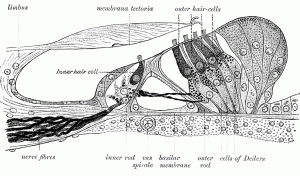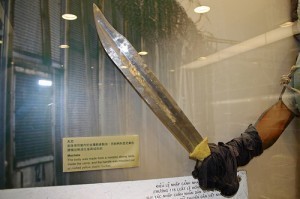How Small is a Hair Cell?
Introduction
Hair cells are those sensory cells inside the ear let us hear sounds.  To hear sounds, the body receives the sound waves, converts them to brain (neural) signals and sends them to the brain. Hair cells play a key role in this process.
To hear sounds, the body receives the sound waves, converts them to brain (neural) signals and sends them to the brain. Hair cells play a key role in this process.
How Small is a Hair Cell?
A single hair cell can be about 30 x 5 micrometers in size. It is too small to be seen with the naked eye. If you were to place it on an ant or mosquito and magnified the insect thousands of times, you’ll still need to zoom in many times over to see the hair cell.
How to Organ of Hearing Works
The human ear is divided into three segments; outer, middle and inner. The outer part of the ear is what receives the sound waves first. It sends down these sound waves into the ear canal. In the ear canal, there’s the ear drum. Sound waves make the ear drum vibrate.
Behind the ear drum are very small bones in the middle ear. These are the middle ear bones. Their function is to carry the sound waves into the last segment, the inner ear.
The middle ear is connected to the throat via the Eustachian tube. The Eustachian tube is important because it harmonizes air in the middle ear with the environment. This is why one hears a popping sound when in an airplane. Without the Eustachian tube, there would be nothing to adjust air pressure in the ear and it could be damaged.
Now inside the inner part of the ear is the cochlea. The cochlea is an interpreter. It converts sound waves into neural signals so that the brain can understand them. The neural signals are delivered to the brain by way of the auditory nerve.
Around the cochlea is the Corti organ. This organ contains the hair cells. Hair cells are divided into outer and inner hair cell types. Hair cells are called so not because they have anything to do with the hair in our heads. The “hair” or sterocilia joined to the tectorial and basilar membranes. These membranes vibrate and cause the hair cells to move. When hair cells move, they create neural signals. These are picked up by the auditory nerve and taken to the brain. That is how we hear.
Hair Cells and Hearing Loss
It is important to protect the hair cells from damage. Hair cells cannot be replaced once they are destroyed by loud noises. Examples of loud noises that can destroy them are loud music and explosions.





